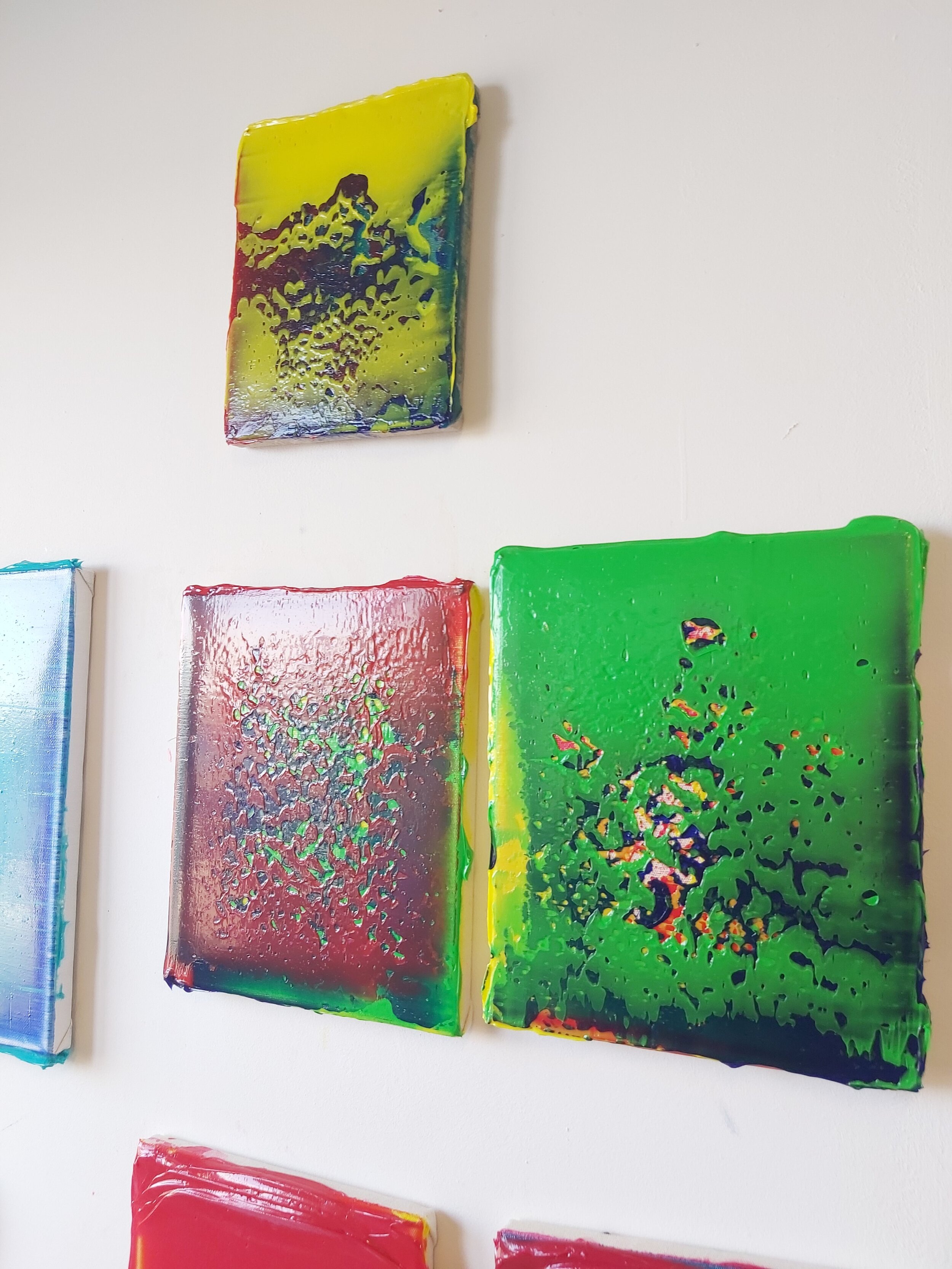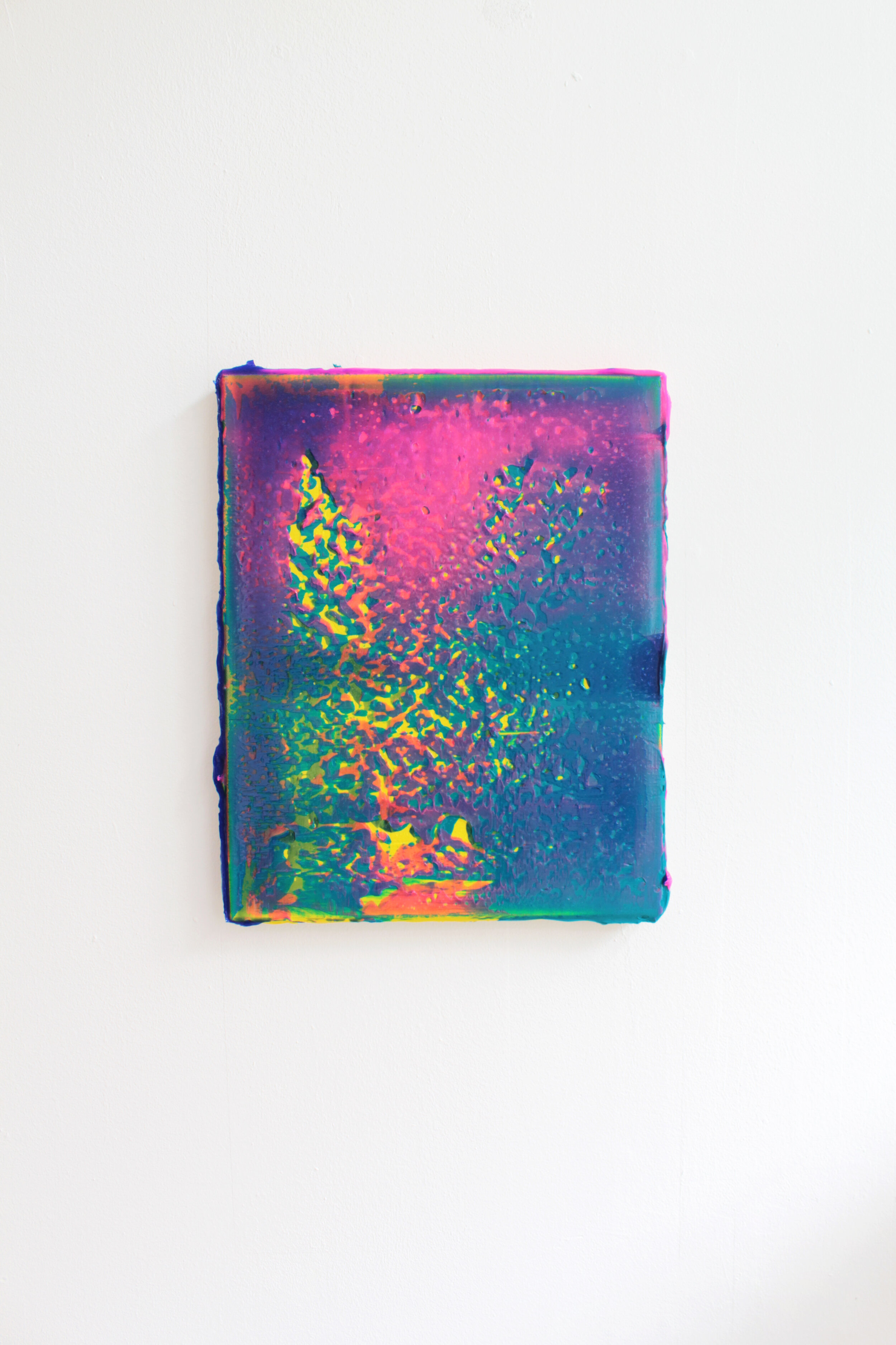In The Studio: Jan Kuhlemeier
With the shows and art fairs being canceled or postponed the artists' represented by Root have been working (alone) in their studios during the last few months, writing proposals, experimenting with new materials and developing new series of work.
This post gives in an insight in the latest series of Jan Kuhlemeier on which he has been working during the last few months; Fluvial and Traction. Not all the works have been shared on our website yet. If you would like to receive a PDF with an overview of the series, don't hesitate to send us an email.
Fluvial
The Fluvial series can be viewed as the series containing the most formal way of painting that Jan has developed up to date.
The paintings consist of two or more layers of ribs. The ribs in the paintings - created with wide brush strokes - refer to the way in which liquid currents are able to create structures. Strong currents in water create this effect in sand on the bottom of the ocean. In the dunes these ripples appear with a strong onshore breeze. A breeze also creates ripples on water, similar to the structures created on dunes and on the bottom of the ocean. Jan is fascinated by this natural process.
Jan tries to grasp these natural phenomena and makes them visible to the viewer. He is interested in the physical geographical qualities of the elements. Constantly constructing and destructing the landscape brings him ideas for new series thereby extending his body of work. These phenomena are translated into specific acts that are fundamental to the process of painting and are determined by Jan in advance.
Traction
For his earlier series Jan did a lot of research into how various semi-transparent colours layered on top of each other can create specific hues. In this colour based research Jan aimed at creating hues that he sees in the reflection of seas and oceans around the world. Water can look very dark and opaque for instance, when there is a strong southwest wind in The Netherlands. The wind washes all the sediments from the rivers meandering in the sea to the north. The water gets muddy, filled with small particles of sand and algae. In contrast to the water from the Atlantic Ocean, that can be very clear and transparent.
Water cannot only get more or less transparent, the reflection of the water and the visible elements in the water are also variable. It is a constantly changing process. The orbit of the sun and moon changes the colour of the water, just like the wind, fog and clouds. All elements create their own reflection on the water surface, and with that the colour of the water changes.
Seeing sunsets almost daily gives Jan the opportunity to think about the colour spectrum we see with the human eye. The sky lights up almost like a big rainbow, it starts with bright translucent red at the horizon and ends in a deep violet the more we look up. Over the past few years Jan has tried to grasp these translucent and vivid colours using layers of transparent colours on top of each other, with gestures determined in advance. Throughout his research Jan has been very aware to choose materials that have a particular quality, materials that reflect his ideas.
Jan finds it interesting that the materials he uses have different potentials and reactions to his acts on a painting. For the Traction series he used a different pressure and angle with his tools compared to the Rheology series. Small changes can have great effects, not only in painting but especially in nature, where his inspiration flows from. Jan reacts to these effects and sees the potential in the surprises that sometimes occur on the canvas. Sometimes the best thing that can happen during the process is that the surface doesn’t react to the gestures as he imagined it, and new potentials are uncovered.
Scraping his tools over the surface in a single motion creates a specific friction on the canvas revealing the potential of a stretched canvas. To Jan it is really interesting to see how much the surface he works on contributes to the way the material reacts to the gestures and determines the visible results of these actions. This also leaves a lot of room for error, so before starting a new series he has to make sure he practices his gestures thoroughly.










